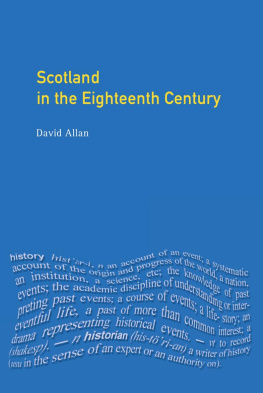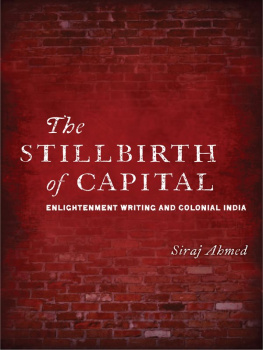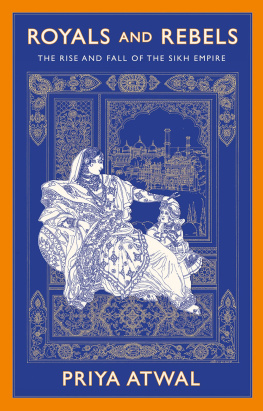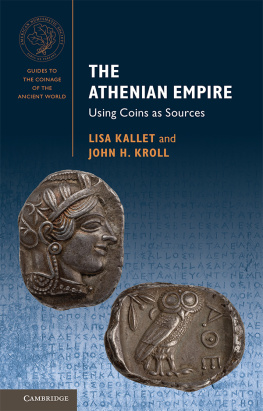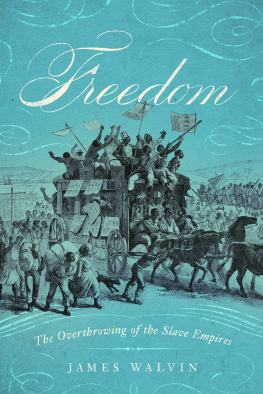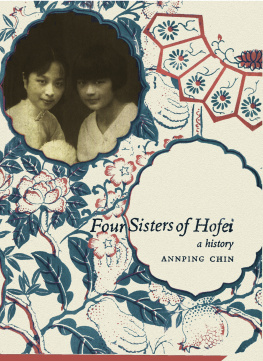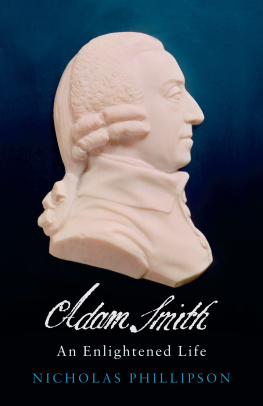The INNER LIFE of
EMPIRES

The INNER LIFE of
EMPIRES
AN EIGHTEENTH-CENTURY HISTORY

EMMA ROTHSCHILD

Copyright 2011 by Emma Rothschild
Requests for permission to reproduce material from this work should
be sent to Permissions, Princeton University Press
Published by Princeton University Press, 41 William Street,
Princeton, New Jersey 08540
In the United Kingdom: Princeton University Press, 6 Oxford Street,
Woodstock, Oxfordshire OX20 1TW
press.princeton.edu
Jacket art: Sir Henry Raeburn, John Johnstone, Betty Johnstone, and
Miss Wedderburn. Ca.1790/1795, oil on canvas. Gift of
Mrs. Robert Schuette. Image courtesy of
National Gallery of Art, Washington, DC.
All Rights Reserved
Library of Congress Cataloging-in-Publication Data
Rothschild, Emma, 1948
The inner life of empires : an eighteenth-century history / Emma
Rothschild.
p. cm.
ISBN 978-0-691-14895-3 (hardback)
1. Great BritainColonies. 2. Johnston family. 3. Scotland
Biography. I. Title.
JV1027.R68 2011
929.209171241dc22
2010054189
British Library Cataloging-in-Publication Data is available
This book has been composed in Sabon and
Copperplate Gothic Light Display
Printed on acid-free paper.
Printed in the United States of America
1 3 5 7 9 10 8 6 4 2
TO VICTORIA
CONTENTS
The INNER LIFE of
EMPIRES

INTRODUCTION
IDEAS AND SENTIMENTS
The age of revolutions of the eighteenth century was a time of transformation in political and economic relationships, and in ways of thinking about the world. This book is about some of the changes of the times, from the point of view of a large, odd, and enterprising family, the Johnstones, and of their households, friends, servants, and slaves.
The four Johnstone sisters and seven Johnstone brothers grew up in Scotland in the 1720s and 1730s and made their way, in imagination or in reality, to the extremities of the British, French, Spanish, and Mughal empires. Two of the brothers became rich, in many scenes and over many setbacks. The family lived at the edges of the enlightenment, and they were friends, at least from time to time, of David Hume, Adam Smith, and the poet James Ossian Macpherson. They were unusually intemperate, unusually literary, and there were unusually many of them.
All I knew about the Johnstones, when I came across the oldest brothers letter book in a library in Edinburgh, was that another brother, John, had been a candidate in a contested parliamentary election in 1774, in Adam Smiths home town of Kirkaldy.
The history of the Johnstones is a story of the multiple or multiplier effects of empire, in which individuals at home were connected, by information and expectations, to events in the East and West Indies. It is a family history, in the sense that the sisters and sisters-in-law in the Johnstones story, including the sisters who stayed at home in Scotland, were at the center of the exchanges of economic, political, and personal information in which the family prospered. It is also a history of other people in the familys lives, and in particular of two individualsa young woman known as Bell or Belinda, who described herself as a native of Bengal, the slave or servant of John Johnstone, and Joseph Knight, the African slave whose lawsuit against Margaret Johnstones son-in-law ended slavery in Scotlandwho are the most important figures in the story, in the retrospect of two centuries of public life.
The economic and the political were intertwined in the Johnstones lives, and so were the public and the private, commerce and law and conscience. Their history is a vista of the new ideas and sentiments of the times and of the eighteenth-century enlightenment. The political thought of the philosophers of enlightenment was concerned in multiple respects with the dilemmas of overseas commerce and conquest.
The Johnstones history is a story of how individuals made money in the eighteenth-century empires, and especially of making money by the use of information. It is also a history of the institution of slavery, from the East to the West Indies. At least six of the seven brothers became owners of slaves. Two of them were public opponents of slavery, and one was a prominent defender of the slave trade. The Johnstones flourished in the half century that has been identified, since the imperial histories of the nineteenth century, with the political institutions of modern times: a new British empire in India, a new land empire in North America, and a new and more enlightened (or less benighted) Atlantic economy in the West Indies and Spanish America.possible futures that did not come to be, and of life in uncertainty, including uncertainty about the frontiers of economic life and the frontiers of the law.
The sisters and brothers lived at a time in which even the distinctions that were most self-evident a generation laterbetween law and political power, or private and public life, or the economic and the politicalwere the subject of endless, anxious inquiry: over what was, and what was not law, in the oldest brothers words, or what [was] the state, or who was a servant and who was a slave.
The Johnstones were no more than minor figures in the public events of the times, and they had an unusual capacity in their political ventures for being on the wrong side of history, or the losing side. But they left behind them an amazing amount of evidence or traces of their lives: lists of things to do, wills, codicils, mortgages, diaries about carrots, inventories, complaints about torture to the Privy Council, evidence in favor of Armenian plaintiffs, letters about bundles of muslin, lists of the names of their slaves, decrees of alimony, annuities to their servants, descriptions of the different kinds of paper used in Persian correspondence, marriage settlements, mausolea, lawyers invoices, love letters from their lawyers, legal documents in successive lawsuits against each other and against others. They were interested in family history and in the techniques of searches in libraries; they wrote letters about sorting letters; and they were complicit, or so it seems, in the falsification of the records of their own dates of birth. There are traces of all the sisters and brothers, the most successful and the most obscure, and of many of their servants and slaves.
The history of the Johnstones and of their extended households is a story of women and men who were involved in one way or another in each others lives, and in the vast changes of the times. But the evidence of the lives of the different individuals is extraordinarily diverse and disproportionate. It is as though there are some who can be seen in intimate detail, and from multiple points of view, and others who are a blur, or figures in a distant landscape. There are some, like Bell or Belinda, who have no names (or only the most implausible of names), no dates of birth or dates of death, and whose words are no more than the words of the clerks of courts. Joseph Knight, who was brought from Africa to Jamaica when he was very young, remembered only that he
Next page

